Dental Supplies Blog

November 19 2020
How Gingival Retraction Drives Restorative Excellence
Producing an exceptional restoration for a damaged tooth involves a series of complex, inter-related steps. When a set of restorations are completed together, such as for a smile makeover or full mouth rehabilitation, each step’s importance increases. One mismanaged piece can turn a masterpiece into a disaster. From planning to the final polish, the delivery of excellence rests on crucial principles.

September 27 2020
3 Must-Have Tools For Successful Endodontics
Dentists face a challenging question every day: Should a damaged natural tooth be maintained with endodontic and restorative treatment, or should it be replaced with an implant? Implants continue to grow in popularity, and over five million implants are placed in the U.S. every year. But many times, endodontic therapy helps preserve a tooth and eliminates more invasive treatment.
More than 15 million root canals are completed annually in the U.S., and general dentists do nearly 11 million of them. Five million dental implants will be placed, too. Each situation requires a series of decisions to determine the best option.
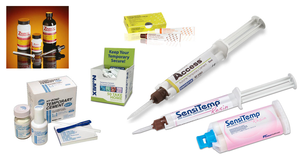
July 26 2020
Temporary Dental Cement Solutions: Six Unique Products That Save Time, Money, and Space
Dental cement products provide a critical tool for dentists to deliver exceptional clinical care. When fabricating a custom lab-based restoration, dentists need a reliable temporary cement during the interim period. But when the final restoration comes back from the lab, a temporary restoration must be easy to remove. And the new restoration needs adhesion that gives both the clinician and patient confidence for years of service.
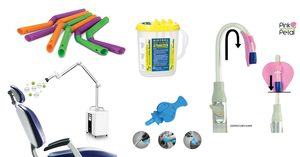
June 28 2020
5 Keys To Aerosol Reduction in Dental Settings
In dentistry, many procedures using high-speed handpieces and ultrasonic instruments produce aerosols, small droplets that suspend in the air. Viral particles, bacteria, and fungi can travel through aerosols, similar to what happens when someone sneezes. In some cases, these particles can go up to 20 feet and stay suspended in the air for several hours.
Dental staff who perform procedures on patients find themselves at risk or exposure to many pathogens. The highest risk develops from splatter to the face of clinicians and to the nasal region of patients. Periodontal procedures using ultrasonic and sonic instruments transmit the greatest number of droplets. Air polishing, use of the air/water syringe, and the operation of a high-speed handpiece also produce aerosols.
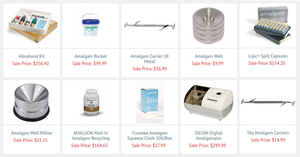
June 17 2020
AMALGAM ALLOYS
A large number of dental restorative materials having different properties have been available in the market. Specialist dental professionals choose the required restorative materials according to the variable requirements intended in each patient. Dental amalgam alloys have been considered as the most commonly used restorative option since ages with the utmost durability and ease of manipulation. This alloy is a popular restorative biomaterial containing mercury in a liquid form in metal alloy forming a mixture. At skydentalsupply, Silver, tin, copper and traces of certain other metals in liquid mercury produce a mixture with great strength, durability, resistance to fracture and longevity which is much needed for restoring the molars involved in everyday chewing and mastication of food.

May 20 2020
What’s new in infection control?
There’s been a busy round of papers recently, about pathogens and contagions in dental practices. It’s easy to guess why. They all kind of say what all of us pretty much expect, but it is nice to see people looking at the problem again, and totting up more stats about it. Numbers are always good. Even more fortuitously, there are good review articles out there, or in process, so it’s easy to scope out current thinking. As always, we’ve done this, with our busy customers in mind.

March 15 2020
Should you buy toys for your pediatric dental patients? A large new study says yes.
‘Dental Accessories’ means a lot of things. In our catalogue it refers to gizmos that make your office all ergonomic, or trays and tubs that keep you organized, or patient education tools – novelty items, really, that patients like to have, so you can keep them engaged and coming back. Or it means toys, dental-themed, for the youngsters in your chair.
Personalities vary. Some clinicians are pretty impatient with the whole concept of toys in the office. Others, possibly the ones with little kids of their own, think it’s a good idea. They put things to play with out in the waiting area, and sometimes let them come right into the operating room with their little patients.
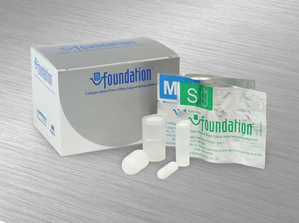
January 27 2020
What’s the latest word on bone substitutes for implant therapy?
We talk with our customers all the time. We like to keep track of what’s on their minds professionally, and we like to keep them up-to-date on industry trends.
Lately there’s been a lot of discussion about guided bone regeneration, for alveolar ridge augmentation. The idea is to build up stable space for infiltration of osteogenic cells, and get angiogenesis underway as quickly as possible.
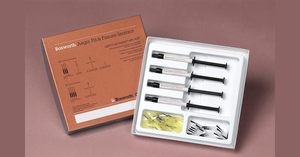
January 14 2020
Pit and fissure sealant versus fluoride varnish – which really is better prevention?
Talking to our customers over the years, and keeping track of what they buy, has taught us that strategies for clinical intervention are sometimes a matter of simple preference, not scientific data. That happens because the data as to which route to choose simply isn’t there.
This is very much the case in the matter of caries prevention. The two basic strategies are pit and fissure sealing and fluoride varnishing. They both work, and they’re both in wide use – but the relative effectiveness of the two is not at all clear, even after all their years in use.
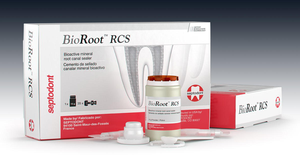
December 19 2019
What’s the best root canal sealer for biocompatibility?
If you do root canals, you’ll use the kind of sealer you were trained to use, or the kind you’re used to using, or the kind that seems to work best for you. We’re largely creatures of habit.
But sealers aren’t all the same.
Ideally, every sealer should be easy to mix, and should adhese nicely, and should seal well, with no shrinking or staining. It shouldn’t dissolve over time, but it should be soluble enough that you can take it out easily if you need to. it should be bacteriostatic, and it should show up clearly in radiography. Above all, it should be as biocompatible as possible, so it doesn’t irritate periradicular tissue.

December 01 2019
Wearing-down of composite resins: what you should know
Resin composites are probably better than amalgamates for posterior tooth restorations. This has pretty much been the consensus since 1999, when use of resins outstripped amalgams. Practitioners and patients liked the color matches, and by then were finally starting to trust composite restorations to last.
Composites are getting better, too. Interestingly, because they’re lasting longer, the reported causes of their failure has changed in recent literature. It’s wear that’s central to long-term restoration stability these days. The problem of wear weighs heavily enough on clinicians’ minds that a simple PubMed search will now turn up 10 or 15,000 articles on the subject just from the last 15 years. A thousand publications a year means that wear really is on everyone’s mind.
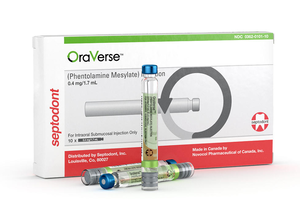
October 30 2019
OraVerse update: 10 years and going strong!
There’s still only one reversing agent in dental anesthetics, and it’s OraVerse, from Septodont/Novocol. We stock it, of course. Our customers love it. It’s hard to find a dental professional who won’t use it, and it’s hard to find a patient who doesn’t want it.
We note that there’s been a fair bit of new trial evidence about the drug over the last few years, and it’s worth a quick mention, just to keep our readership up-to-date about what’s known about who can use OraVerse, whether there are adverse events yet, and so on. The truism is that you don’t really know the value of a drug until it’s been out for a decade, being used in the real world. In the case of OraVerse, all the update news actually seems very good.

October 03 2019
Appliances and ligation: what’s best for oral hygiene?
Orthodontists tell us all the time that that their patients, or more usually their patients’ parents, fret about keeping teeth clean during the course of orthodontic treatment.
They worry that food will get trapped in the appliances, and there will be a long-term increase in likelihood of dental caries and gingivitis, and they ask if there isn’t a way to minimize all of this by choosing the appliance judiciously. Sometimes they’re very well read, and they even know about trends in anti-microbial adhesives.
In choosing the best appliance, with oral hygiene in mind, they think, and orthodontists often think, that clear aligners, and self-ligated brackets, are better than the usual fixed appliance system.
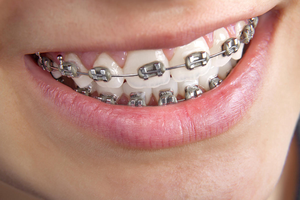
September 26 2019
Bond strength and brackets: to etch or not to etch?
It’s not for us to tell you how to manage your orthodontic patients, but we do keep careful track of all the clinical literature out there, so that we can be of good counsel to you when you choose practice supplies. Like you, we want your patients to have the very best care there is.
One strain in recent literature is whether or not to etch. You’ll know this conversation has been around since the 1950’s, and it picked up late in the 1970’s, when direct-bonding of brackets to teeth came along, and people stopped using bands. Traditionally, there would be a total-etch adhesive system, where you’d clean the enamel, put on phosphoric acid, rinse and dry, and then do the adhesive and a composite resin.
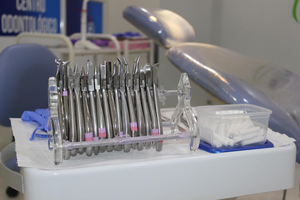
September 09 2019
How To Choose The Best Orthodontics Supplies
So many things have changed in the world of orthodontics over the past few years. One only needs to watch the daily ads on TV, news media, and other communication channels to understand the recent advancements that have taken place in this industry. A few years ago, orthodontists were faced with the problem of selecting the most suitable supplies and equipment for their practice. While this still poses challenges (but at a lesser rate), advancement in technology has made sorting and buying orthodontics equipment more accessible and faster.
